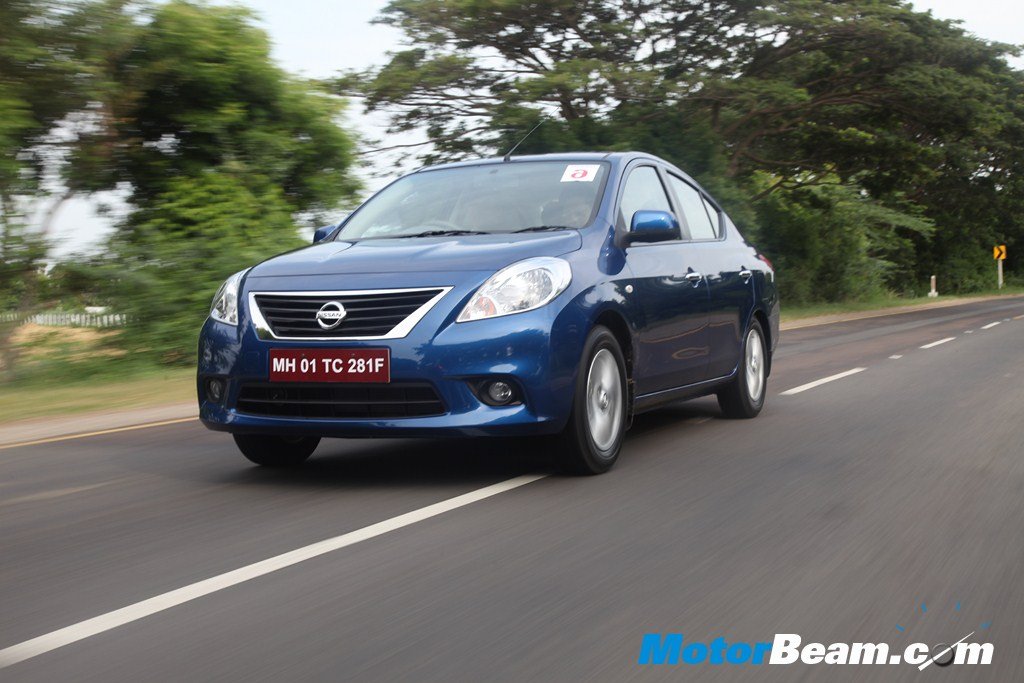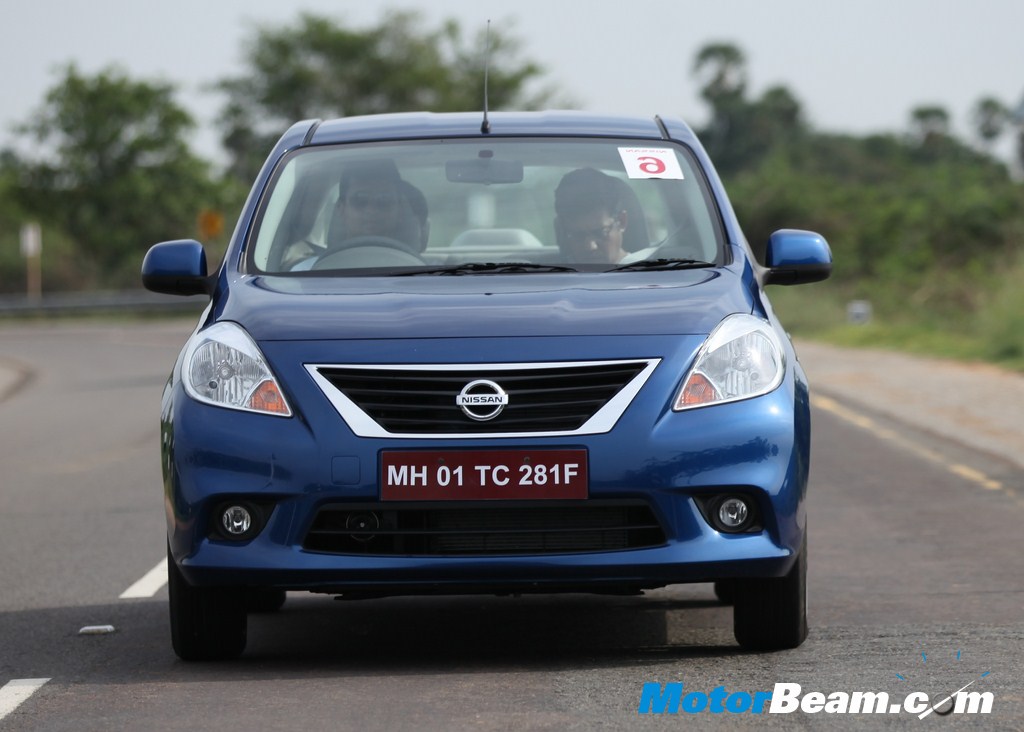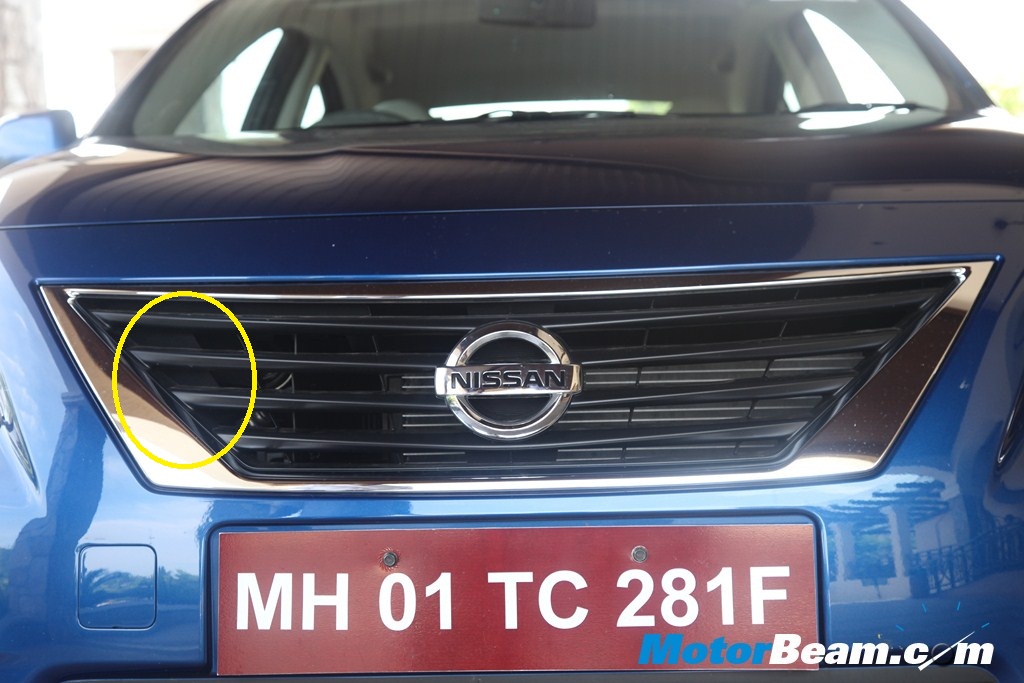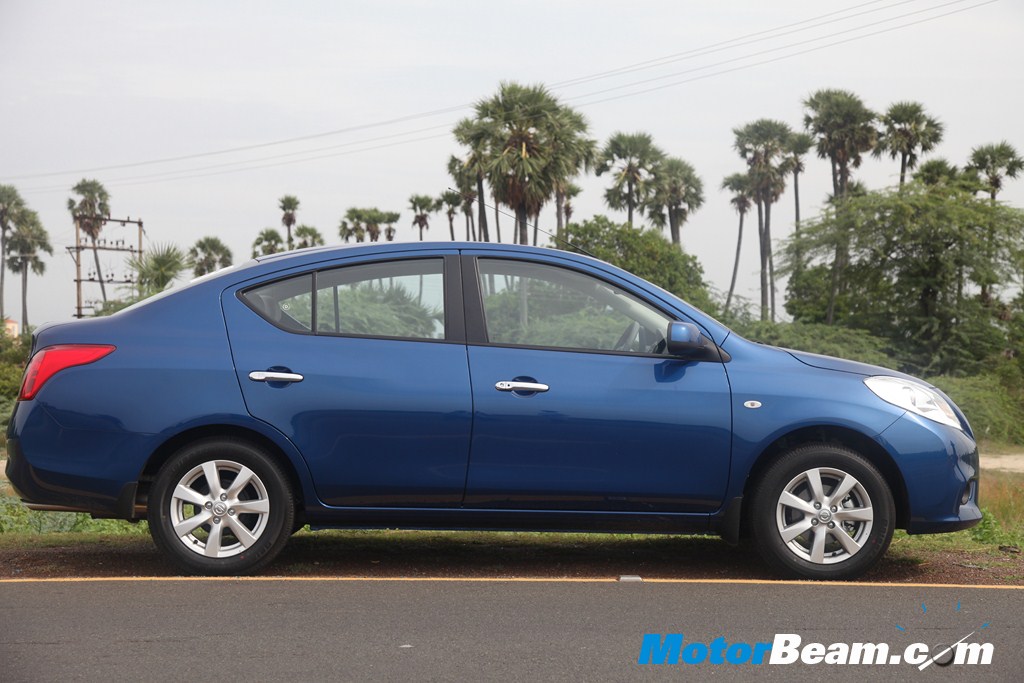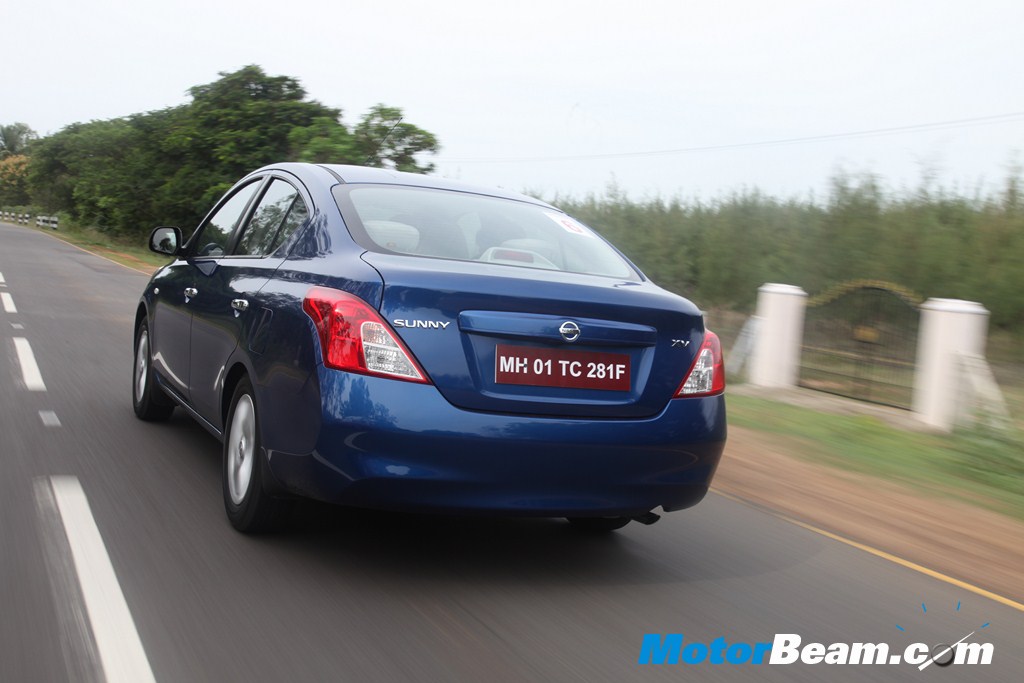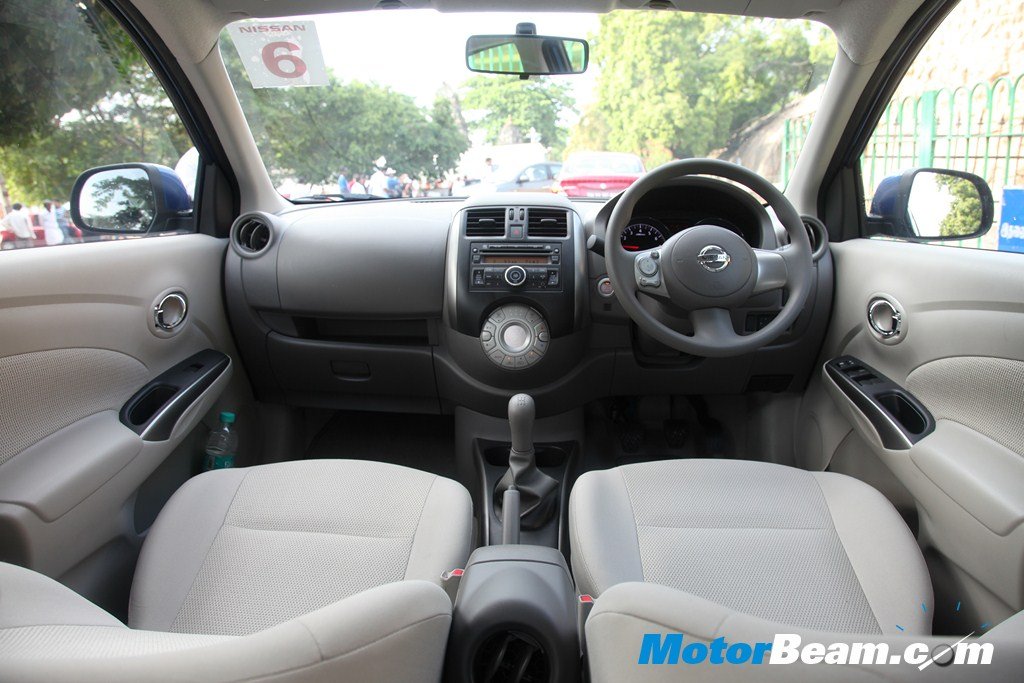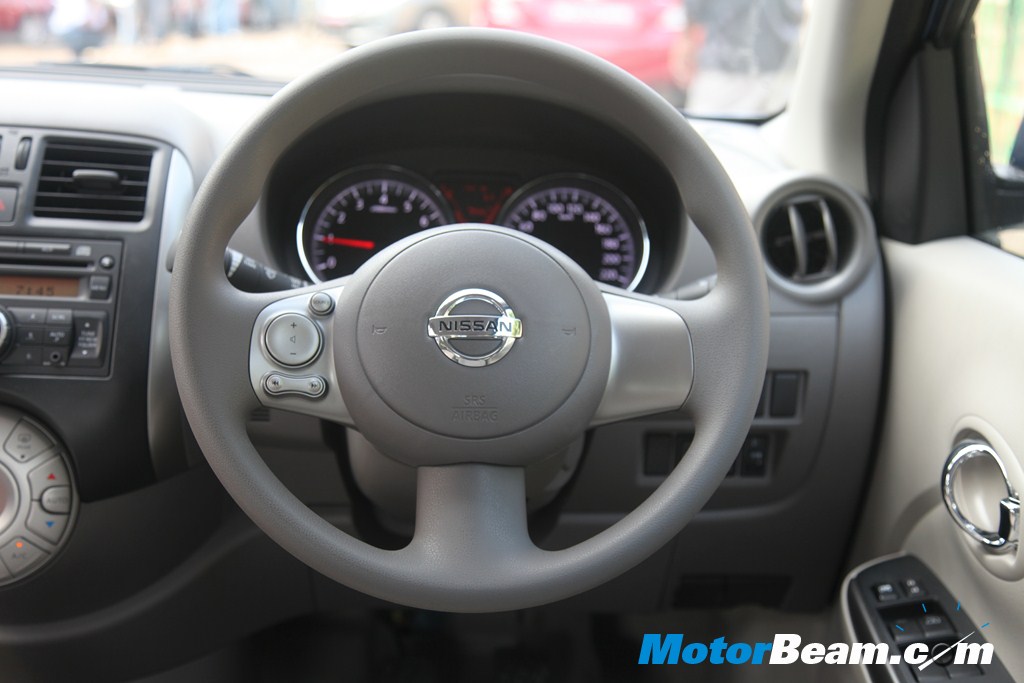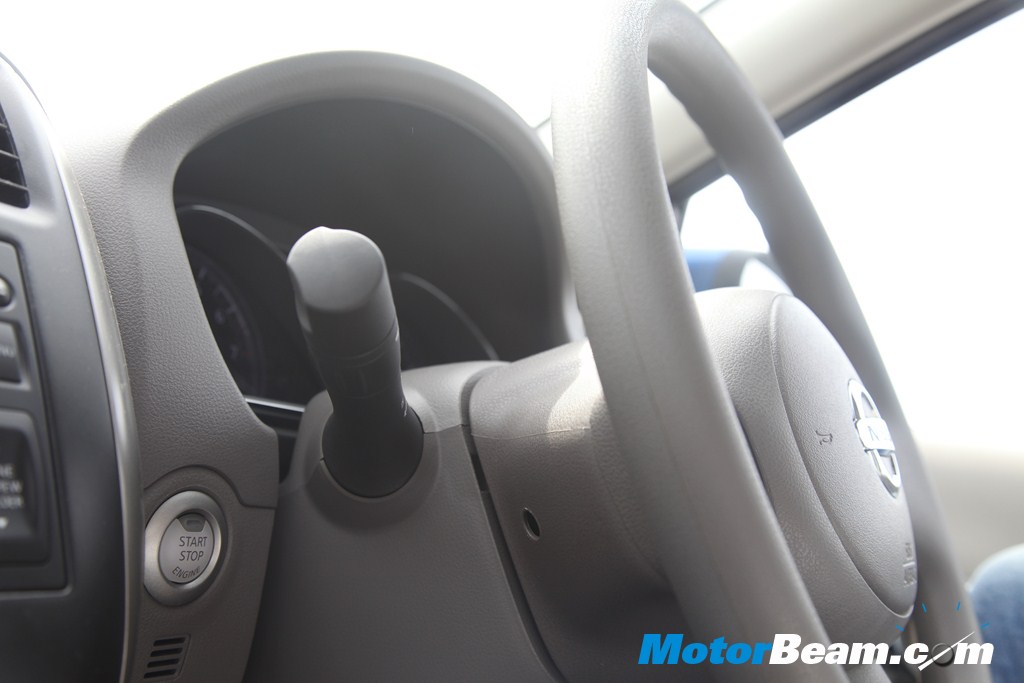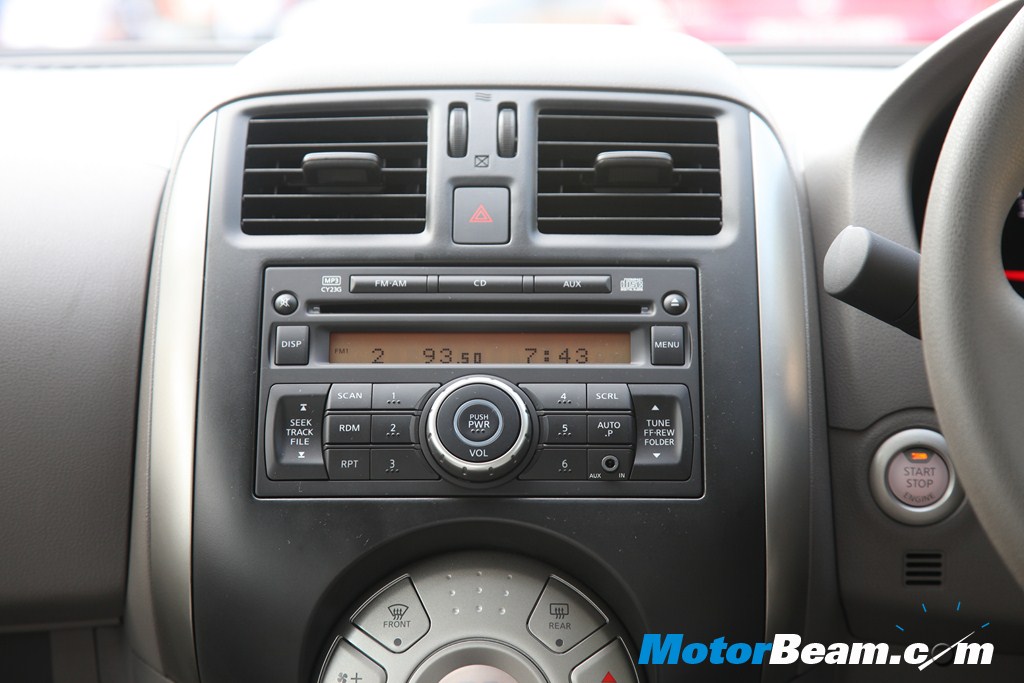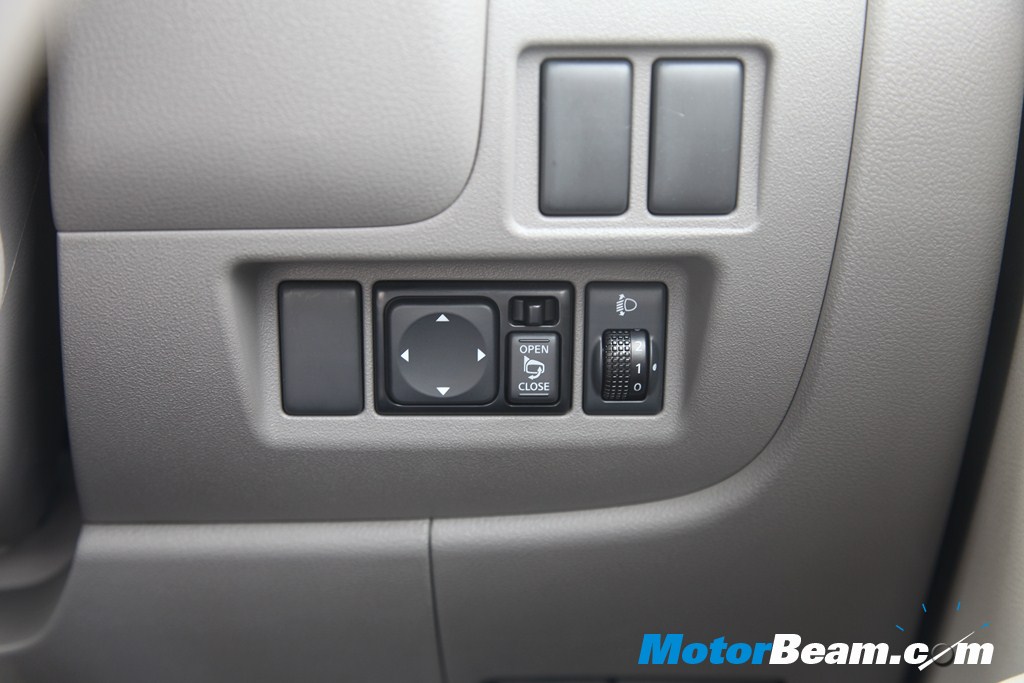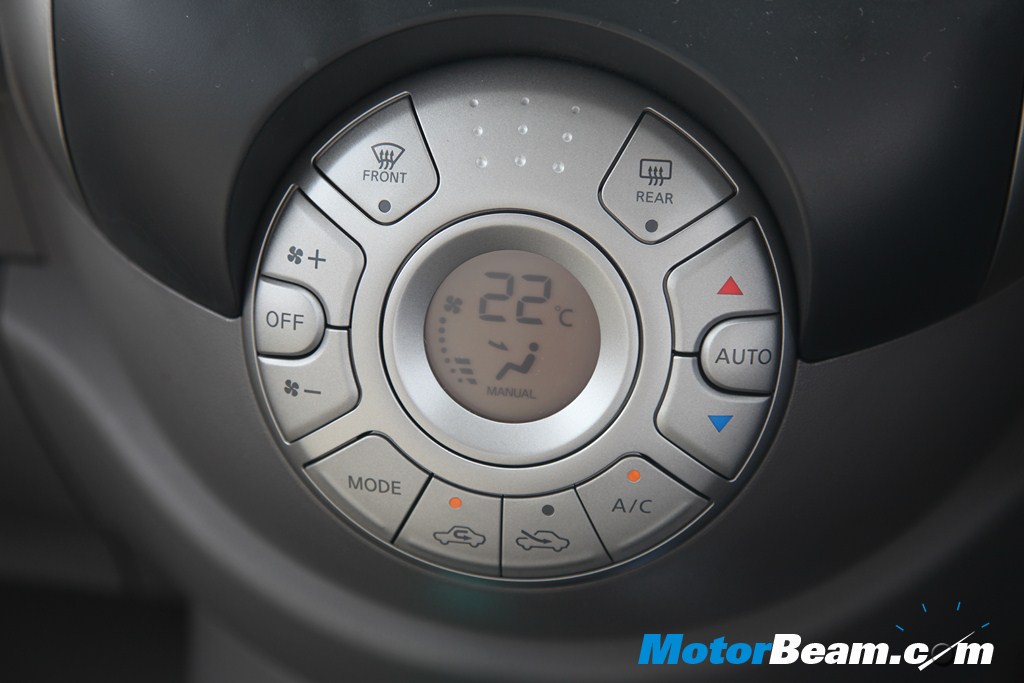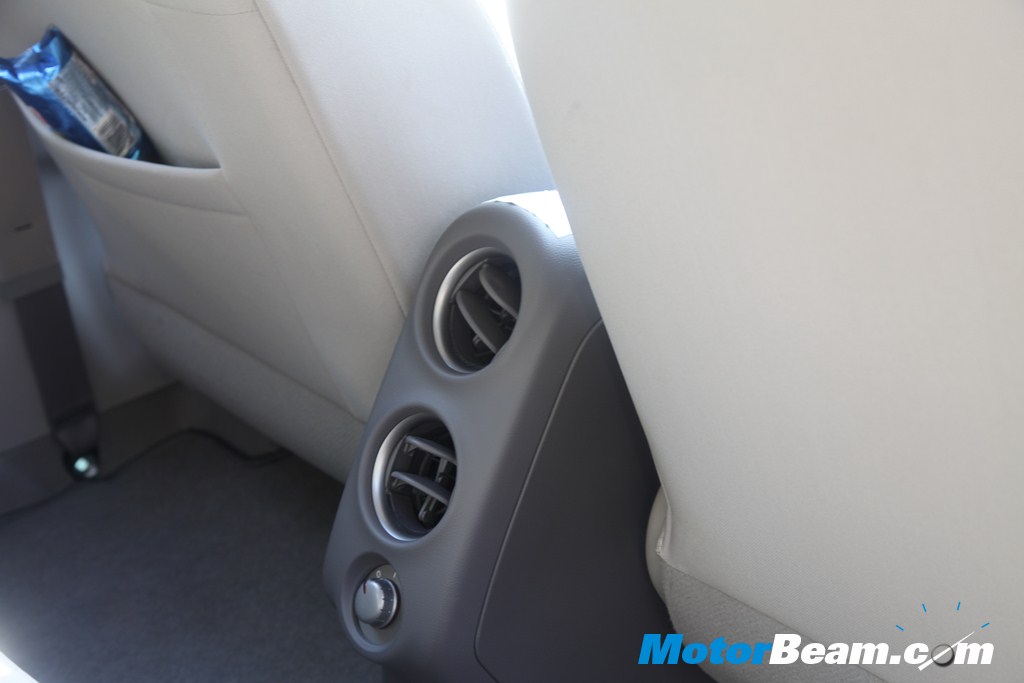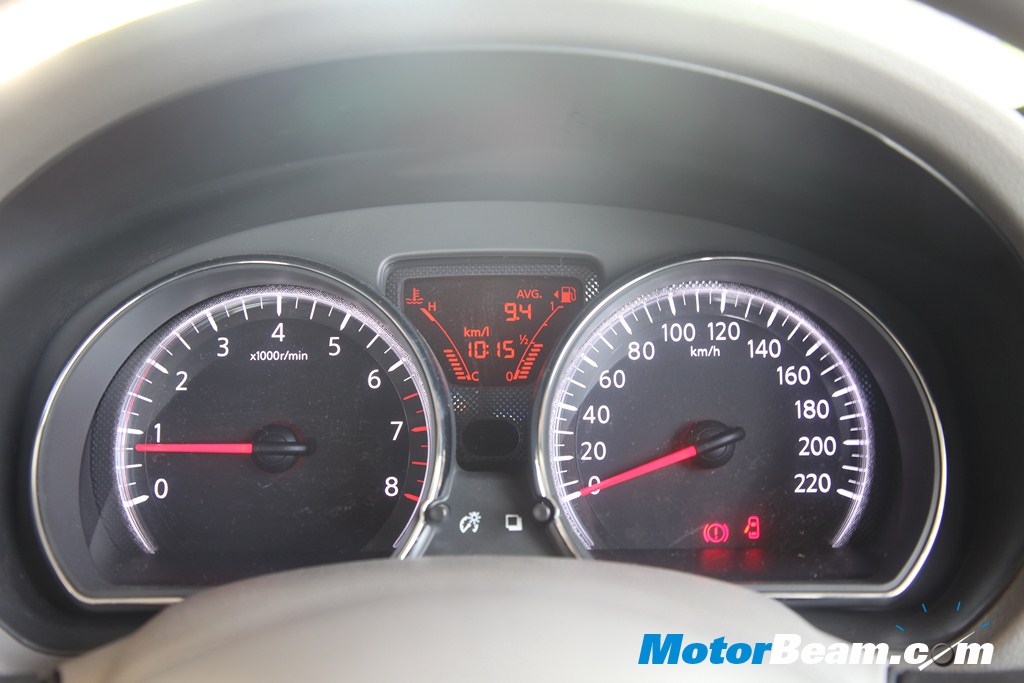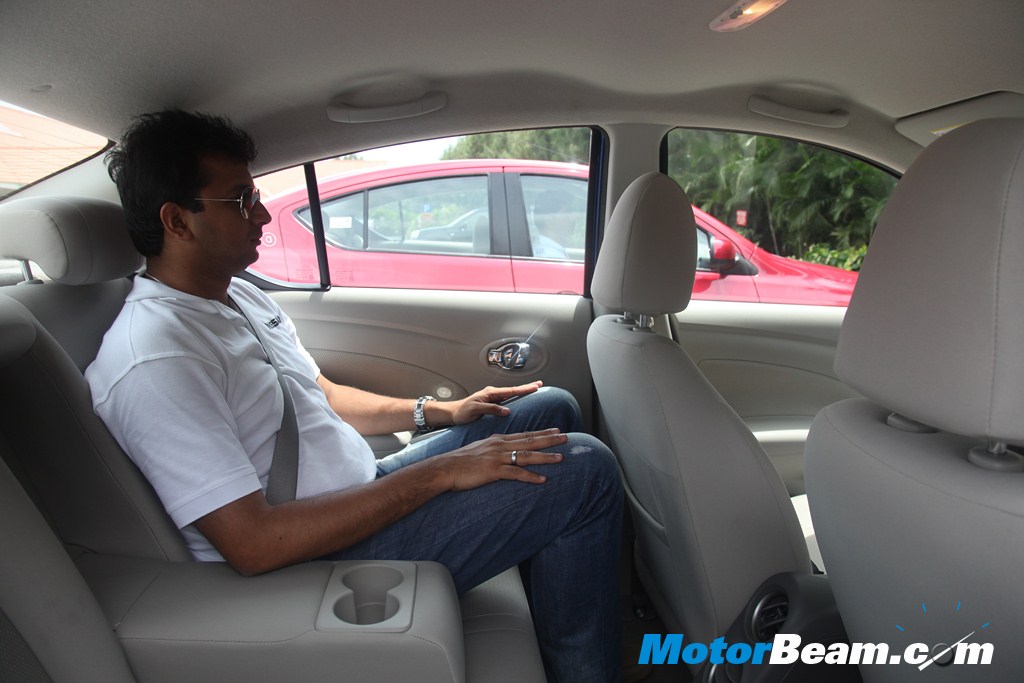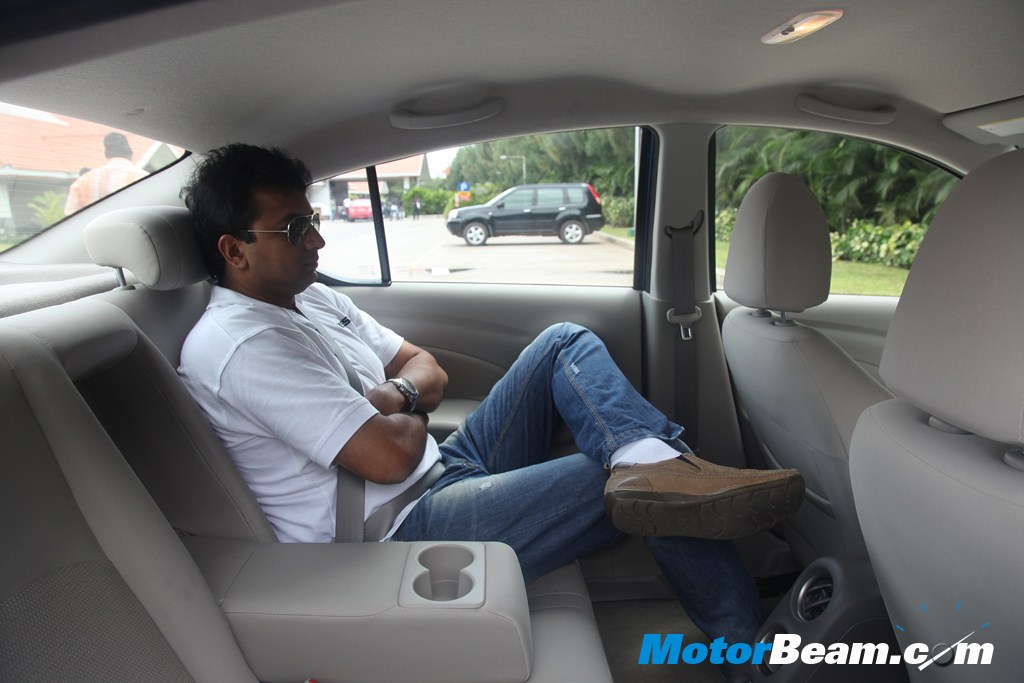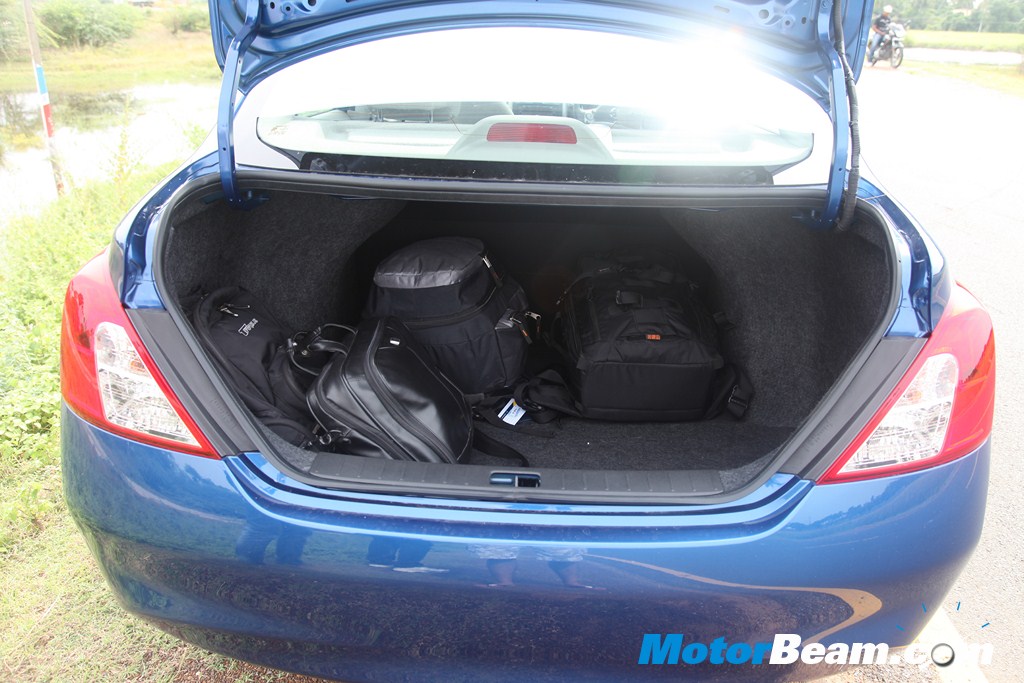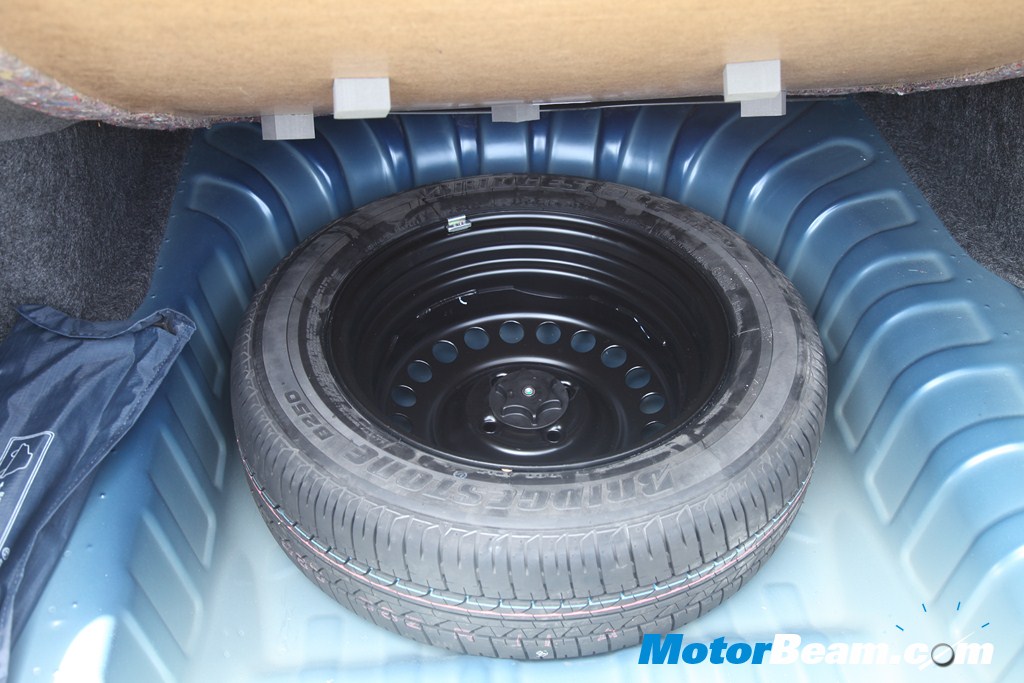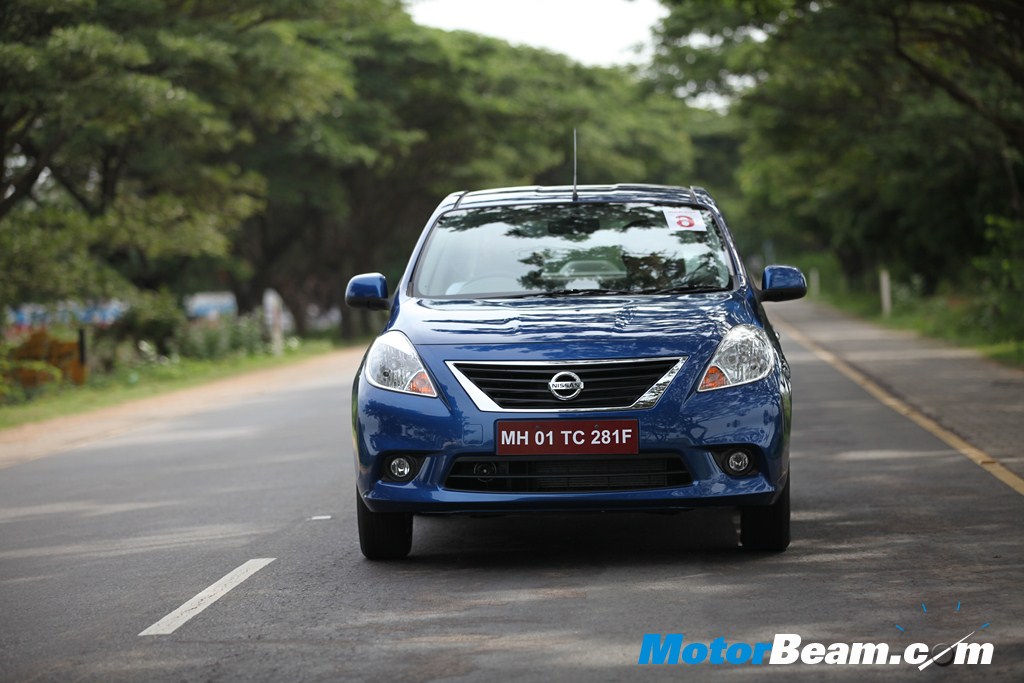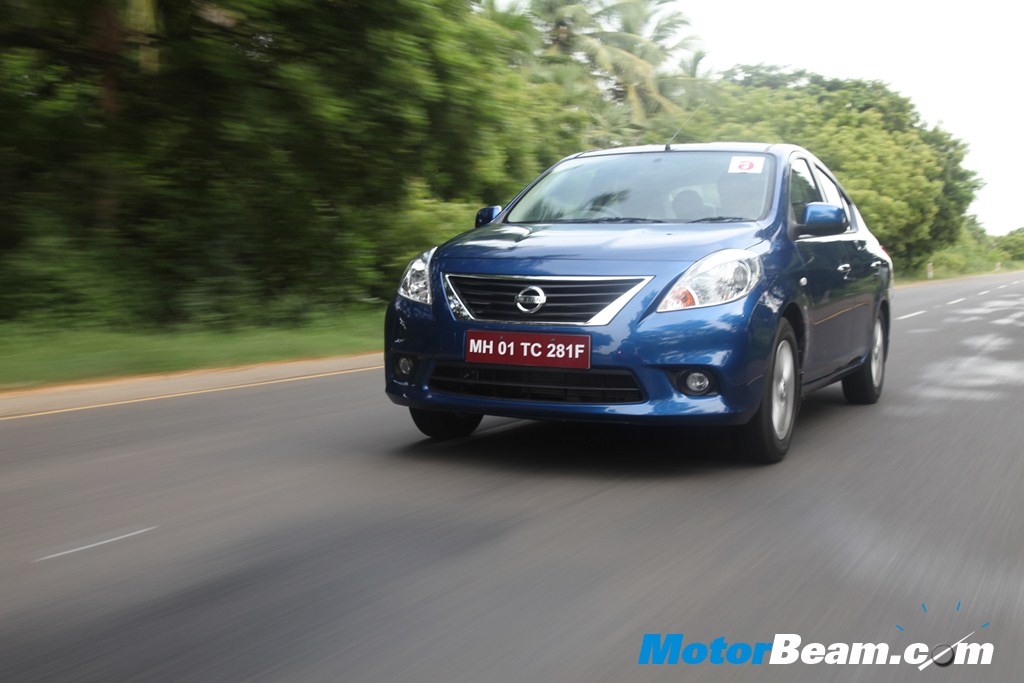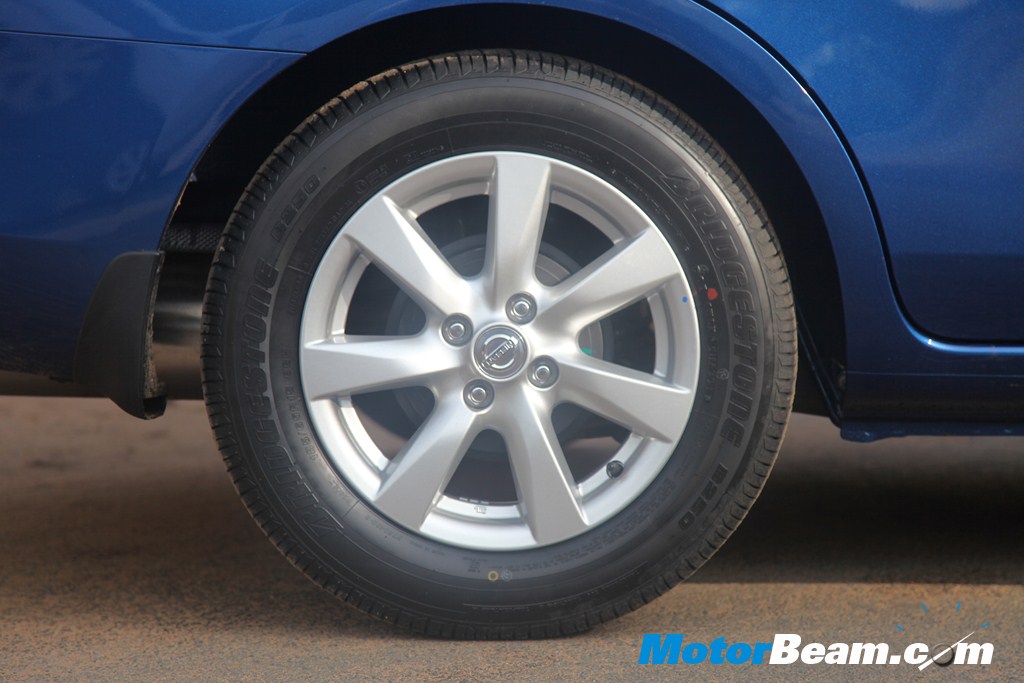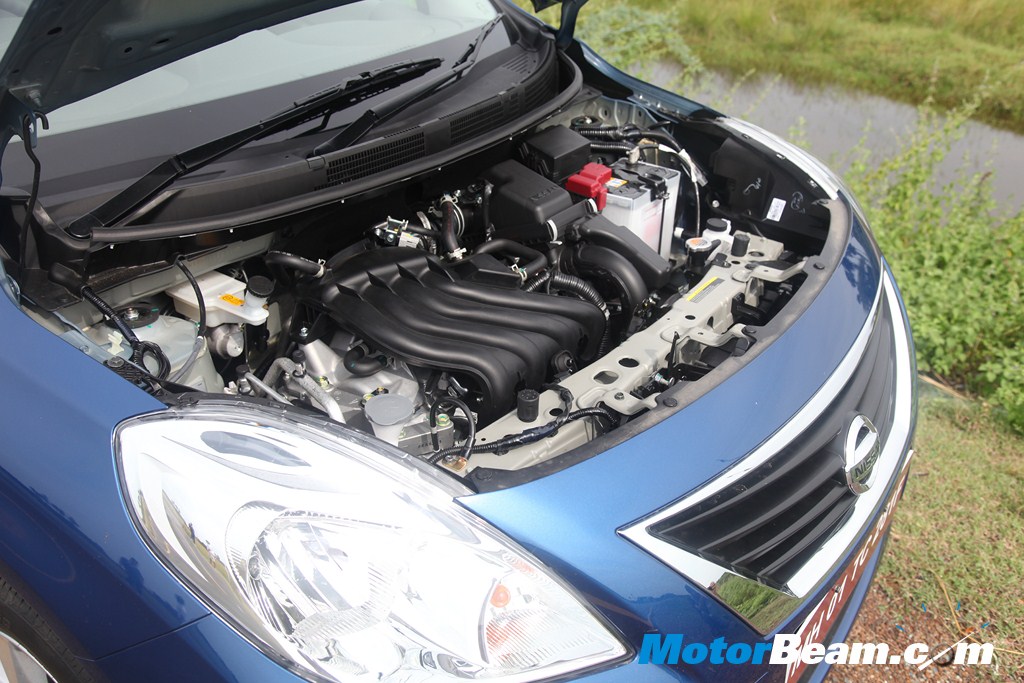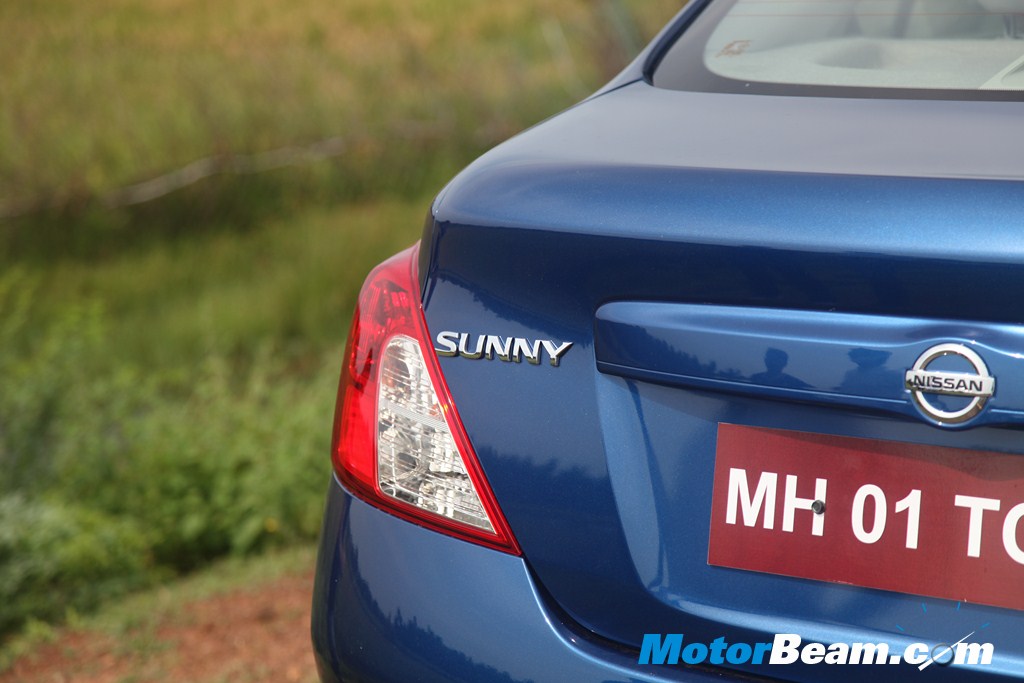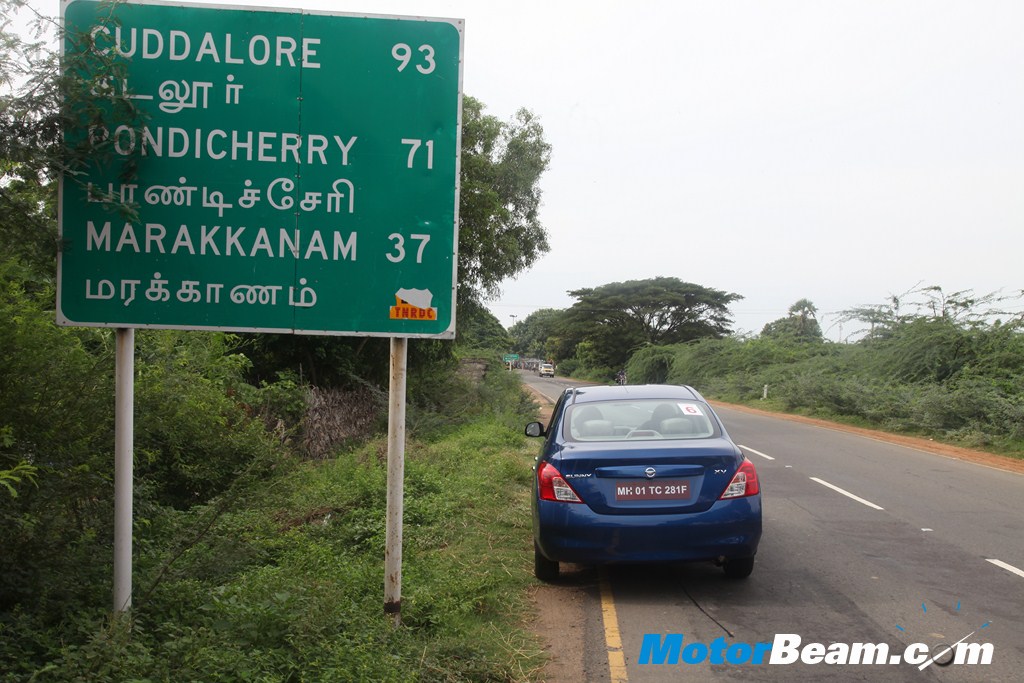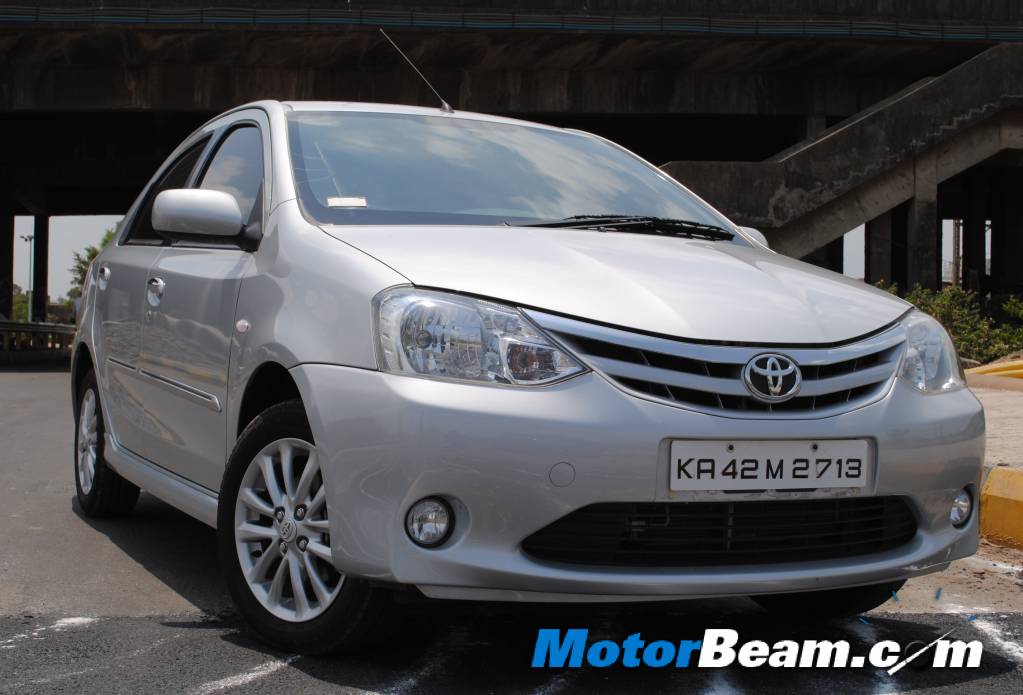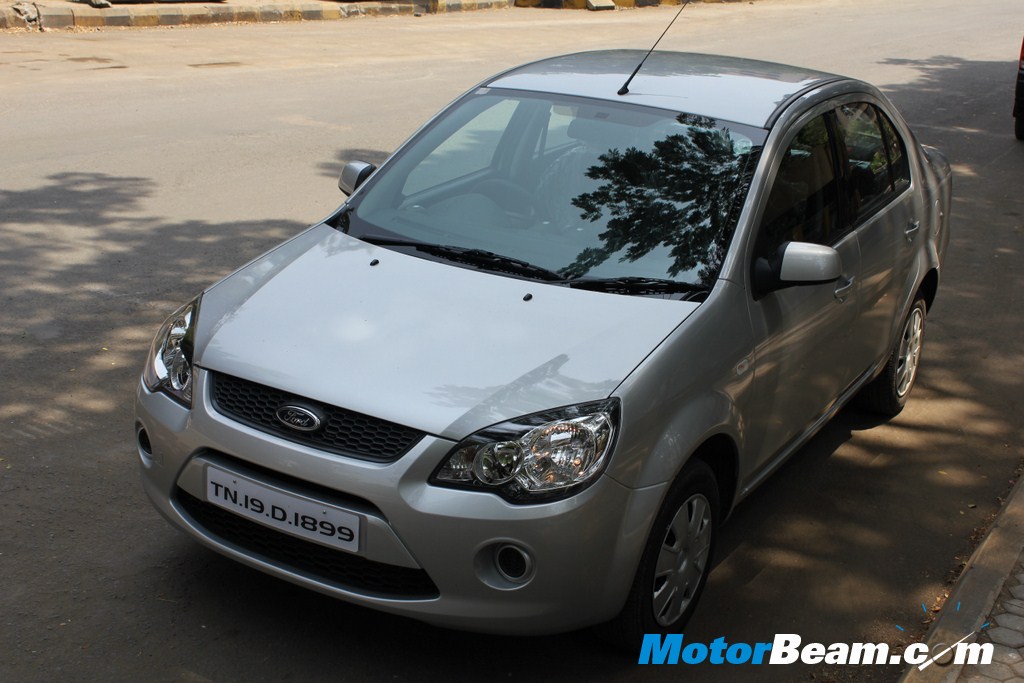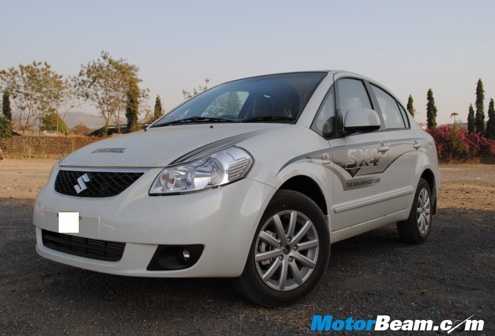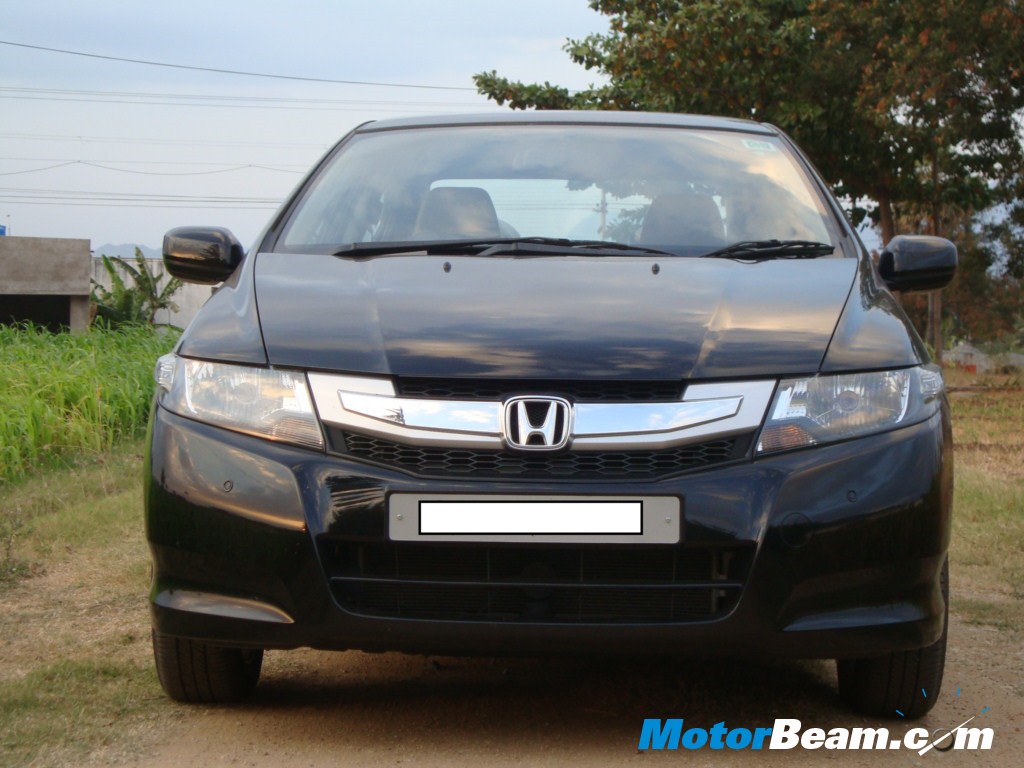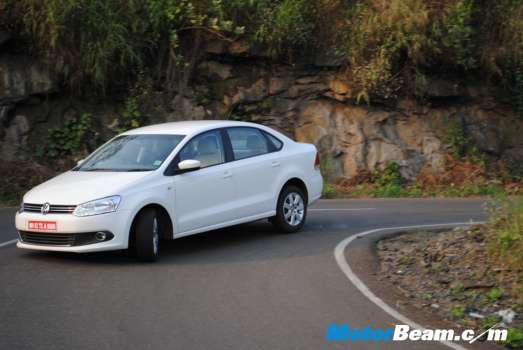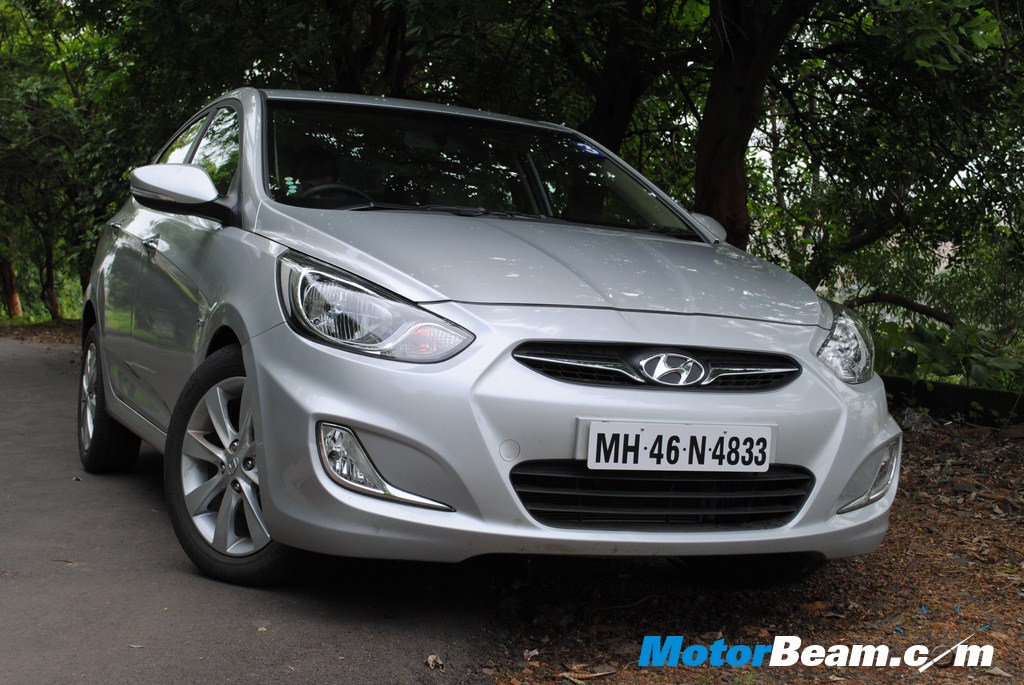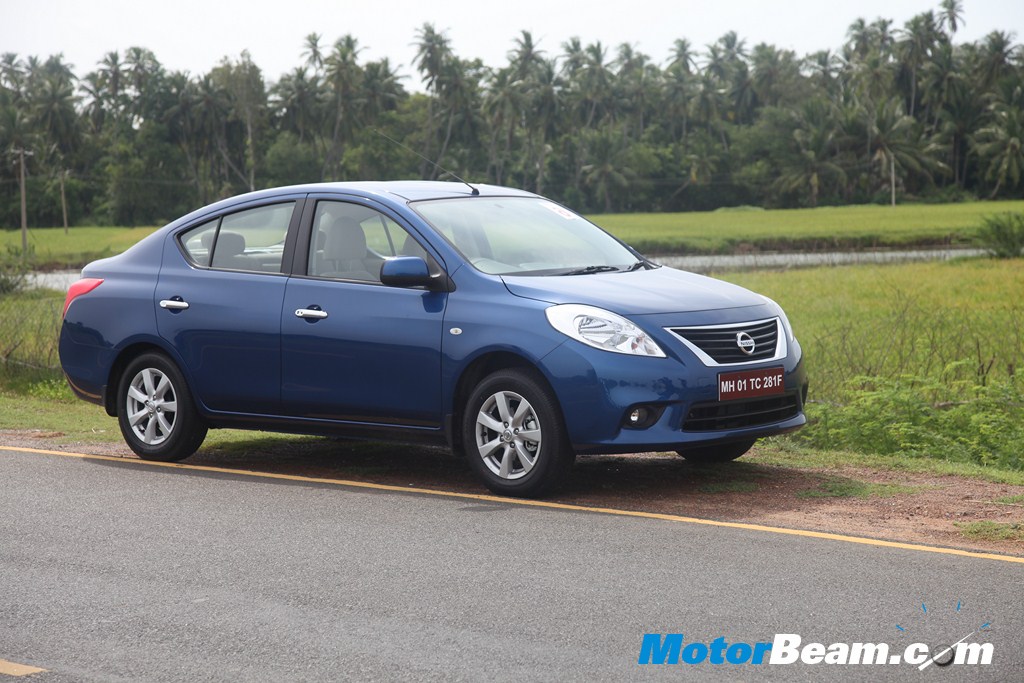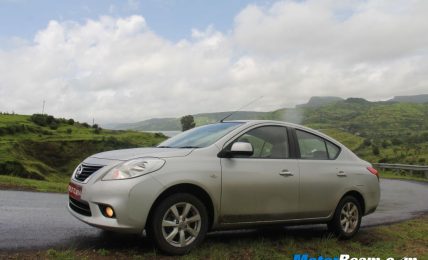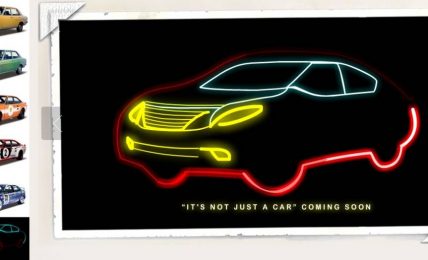Car tested: 2011 Nissan Sunny XV
Price OTR Mumbai: Rs. 6.73 lakhs (XE), Rs. 8.00 lakhs (XL) 8.95 lakhs (XV)
The Sunny has been a best seller from Nissan globally and has sold more than 16 million cars till date in the international markets. Launched in 1966 in Japan, the name Sunny was christened after conducting a campaign in Japan, wherein 8 million participated. Currently in it’s tenth generation, the present generation Nissan Sunny was launched at the Guangzhou Motor Show in China in December 2010 and has made way into India in just 10 months time.
The Sunny will be Nissan’s second mass market car in India, the first being the Micra which was launched last year. Both these cars are based on Nissan’s ‘V’ or Versatile platform. We drive the all new Sunny in Chennai and find out if it cuts the mustard.
Exteriors – Though the Sunny shares the same V platform with the Micra, the two cars are much different as far a looks go. Most sedans are nothing more than a boot attached to their hatchback avatar, the Dzire is an appropriate example, but the Nissan Sunny has been engineered to look more muscular and from no angle resembles the Micra. It is wider, longer and has a larger wheelbase as compared to its hatchback sibling. The front is highlighted by chrome outlined grille with muscular bumpers. The air dam has a large mesh through which the horn and the radiator are clearly visible. The front appealed to me the most and certainly makes the car look a segment higher than it is.
Notice that the left side (as we look at it) of the grille is blocked and thus the airflow is more focused towards the right. This has been done to optimize the airflow towards the air intake in the hood.
From the side profile, the Sunny has a typical coupe resemblance owing to the sloping roofline. This gives a larger feel to the car while large wide rear glass gives an airy feel. The paint quality deserves a special mention here, looks rich and premium. Nissan is using a special weight reduction paint, which not only looks premium but also makes the car lighter by 0.77 kgs. Sharp lines running along the sides add character to the design.
The first thing which will probably come to your mind on examining the boot is the Swift Dzire. No, I am not saying that it looks bad, but bears a close resemblance due to the Dzire due to the tail lamps jutting out and the body curving inwards coupled with the raised boot relative to the tail lights. Similar to the front, the rear bumper follows the same trend and looks bulgy and muscular. Rear fog lamp is absent but reflectors have been incorporated in the cluster. When Nissan had unveiled the Sunny, I have to admit, I was not a big fan of the design but have spent some time with the car, I realized that it just grows on you.
Interiors – Interiors bear a close resemblance to the Micra, after all the Sunny is based on the same ‘V’ platform and both cars share parts. Dashboard design is similar too and Nissan has used high quality plastics with great fit and finish. Chunky chrome door handles are picked out of the Micra as well. Nissan officials compared it with the Toyota Etios during the press conference but I wonder why, in terms of interior quality, its a no brainer that the Sunny is miles ahead of the Etios.
Two tone beigish grey seats are comfortable and give ample back support, the backrest literally hugs you tightly from the sides leaving no area unsupported. However under thigh support is strictly average with ample knee room at the front courtesy of rounded dashboard design. Two cup holders are place in the front, right in front of the gear lever. For the rear passengers the cup holders are integrated with the rear central armrest. The front door pockets can fit in a one liter bottle and a couple of magazines
Steering feels good to hold especially with the thumb rests (as I like to call them). I would have personally preferred a meatier feel.
Distance between the steering and the indicator/wiper stock is a little more than normal and one has to really ‘reach out’ to use them. Take a while to get used to and you are good.
Audio system supports Aux and CD. Four speakers have been provided, (2 + 2) configuration. Sound quality is fair but the sound tends to crack up on higher volumes. Audio controls have been provided on the steering wheel for better accessibility. USB support not provided. Notice the Start/Stop button in the background.
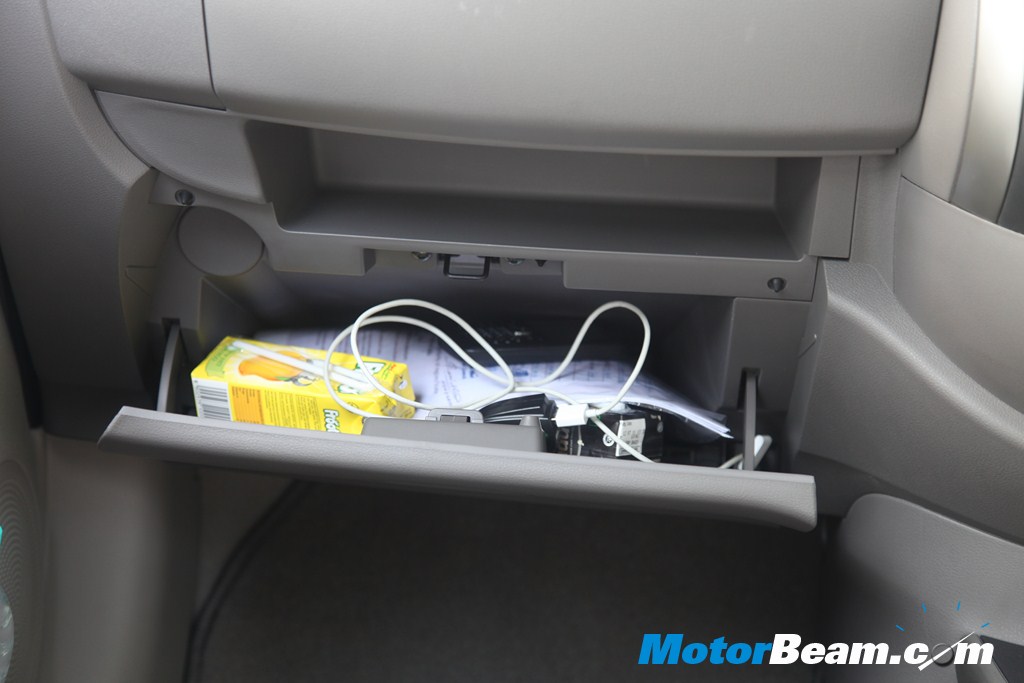 Glove box is one of the smallest I have seen in a while. A small niche above it is a handy place to keep cellphones etc
Glove box is one of the smallest I have seen in a while. A small niche above it is a handy place to keep cellphones etc
The top of the line XV variant gets electrically retractable and electrically adjustable outside rear view mirrors.
Air-conditioning unit has been picked out straight from the Micra again and it takes some time getting use to the circular design. Automatic Climate Control worked fairly well in the hot and humid Chennai weather. A few of my colleagues from Mumbai were carrying towels around, just goes to show how hot it was.
The rear seat gets a fan with two circular vents, mind you this is just fan whose purpose is to circulate the air into the cabin and it literally pulls in air from the front and blows it behind. Fan speed can be toggles between 1 and 2, however in the fastest fan speed setting, (i.e. 2), I was unable to hear the journalist in the front seat while seated at the back. It’s a thoughtful feature for sure, and can be optimised by turning the front vents towards the inlet of the rear vents. Notice, that there is no seat pocket behind the drivers seat.
Instrument cluster consists of two large dials with the MID in the center. Chrome surrounds around the dials add a premium feel.
I will let the pictures do the talking here. The seats provide good back support but lack largely in the under thigh support department. In the first picture, the front seat is in its rear most position and I still have enough knee room to be comfortable. Headroom falls short with my hair brushing the sloping roof line (maybe that’s a sign that i need a haircut). In the second picture, the front seat is in the anterior most position and I am sitting like a king with my legs folded. Keeping in consideration that I am well over six feet in height, I was extremely comfortable with the Best in Class legroom at my disposal and it wont be surprising to see many customers buying the Sunny for its rear space.
Boot space is generous at 490-liters and one can stow much more luggage inside than what appears from the outside. The boot tunnels up inside as seen in the picture.
Spare wheel is the same size as the original tyre but is mounted on a steel wheel as opposed to the alloy.
On the Move – Nissan’s major USP in the Micra was the iKey and Push button. This has been carried forward to the Sunny too. If you have the key on you, just push the black button the on door handle and tug on the door, it will open. You can also open the boot via the ikey by holding the boot release button. To start the car, dump the clutch and press the ‘Start’ button and the car will start. We have already covered it in detail while reviewing the Micra, you can check it here.
NVH levels are average on the Sunny. Though there is no wind noise seeping into the cabin at high speeds, the tyre noise is apparent and engine gets obviously audible past 3000 rpm. The hood does not have any absorbent material lined to improve the NVH. This will be certainly done once the diesel model rolls out.
A close examination of the car and you will realize that the built quality is much superior for a C segment car. Interior fit and finish was great and so was the paint quality. No rattles or squeals of any nature at any speed. We did notice uneven panel gaps on the exteriors of a few cars but we were told that they are pre-production cars and the issue had been sorted out, our particular car was perfect in that respect.
Ride, Handling and Braking – Ride quality is mature and it’s pretty obvious that Nissan has tuned up the suspension for Indian road conditions. Ride is on the stiffer side but having said that, the Sunny is well composed over undulations on the road with hardly anything seeping into the cabin. I quite liked the ride quality, too soft tends to get bouncy, but this felt apt.
The Sunny is confident around bends on the road. Steering is light at low speeds, ideal for city driving, but weighs up nicely as you speed up with sufficient feedback to inspire confidence. Its the extremely sharp corners which need the extra steering correction but having done that, the car points in the right direction in almost all situations. Bridgestone tyres (185/65/15) offer reasonable grip.
Braking feel has a fair amount of play before the brakes end up biting. Standing on the brakes from 100 km/h, the Sunny stopped in one line without any lateral movement. On the other side, sudden braking can get scary with the brake play making stopping distances difficult to gauge in panic situations. Abs, EBD and BA are standard across all variants.
Performance – Powered by a 1.5 ltr 4 cylinder petrol engine, the Sunny churns out 99 PS at 6000 rpm and 134 Nm of Torque at 4000 RPM. The engine revs all the way to just under 7000 RPM. Drivability is good but the engine seems to struggle once into triple speeds. Past 3000 RPM, the engine note gets blaring loud. Gear ratios are tall and have been optimized for Indian conditions, and its clearly noticeable once you get behind the wheel. Gearbox is notchy and you can actually feel the click of the gears slotting into place. Nissan officials say that they will address the issue. Driving in 5th gear from 40 kmph, the Sunny takes an eternity to get to 100. Overtaking on the highway requires frequent working down the gears, drive in third gear on the highway and engine gives you a punchy performance with some fun too.
The Sunny is not a scorcher but offers sufficient mid range and high end punch with fair amount of power lying in the low end of the revmeter making it an ideal city car which can also double as a strong contender for the highway. Though we did not get an opportunity to do a timed 0 – 100 run, we expect the Sunny to cross the line between 13.5 – 14.5 seconds. The MID reading on the fuel efficiency was 9.2 kmpl, which is astounding since we were continuously driving around 4000 – 5000 RPM. Around 12 kmpl is a practical figure one should expect in the city. Hitting 100 kmph is not much of a problem but if you want to go beyond 130 kmph, then you need a large open stretch of road as the engine starts running out of breath. We hit a top speed of 145 kmph, but realistically speaking, that was with four people on board and a boot full of luggage. In ideal conditions, this figure should be considerably better.
Conclusion – The Sunny will be competing with established cars in the market like the City and Verna. Its pretty obvious that Nissan had a price point in mind when they were optimizing the car for the Indian market. Undoubtedly, it has the best in class space and is the only car to offer the iKey and push button start in the segment barring the Verna and also looks a segment higher with its muscular designing. Being a global product, its offers better quality and better safety features than most in the competition and has decent road manners for a mid size sedan. The only kink in its armour lies in the fact that almost the entire competition comes with diesel power trains and its only by next year will the Sunny allow diesel in its fuel tank. With localization of upto 90%, we expect the base variant to be priced around the Rs. 6.5 lakhs mark. In a few days we will know but if Nissan hits a jackpot with the price, there is no reason why you would not buy the Sunny.
Quick Comparison With The Competition
1) Toyota Etios – The only reason why anyone would want to buy the Toyota Etios is for the space on offer, however the Sunny trumps the Etios fair and square in this department. Quality of the Etios is no match for the Nissan and the overall ride and handling of the Etios is nothing to talk about either. The Sunny justifies the Nissan badge, however the Etios doesn’t justify the Toyota badge which it carries.
2) Ford Fiesta Classic – The Fiesta is a drivers car and beats the Sunny in the performance department. The Fiesta handles way better than the Sunny and the engine of the Fiesta can bring a smile on the face of the driver anytime. The Sunny has better space though and has slightly better quality than the Fiesta Classic. Factor in the practicality of the Sunny and it emerges as the ideal choice for the chauffeur driven.
3) Maruti Suzuki SX4 – The SX4 has the vast Maruti Suzuki service network to boot while Nissan has a wafer thin dealership network. However the Sunny has better space and ride quality on offer, while the SX4 offers value to the buyers. The SX4 has started to look dated and lacks the built quality which is present in the Sunny. Performance wise there is little to chose from, between these cars. But the SX4 comes with an automatic transmission as well, which many buyers are looking for in a sedan these days.
4) Honda City – The king of the segment won’t be much worried with the arrival of the Sunny. The Honda City sells due to the badge, quality and performance it offers. The Sunny has better space and is more practical but the City has a better engine and the excellent handling. The City is the drivers choice, while the Sunny is the car for rear bench comfort. Once the diesel Sunny comes out, the City will be very worried.
5) Volkswagen Vento – Performance wise, the Vento is very good. The ride and handling balance is spot on, while the interior quality is a match for the Nissan’s. Volkswagen’s dealership network is slightly bigger than that of Nissan, but not by much. Overall both cars are an excellent buy but the Sunny offers best in class space and comfort. Add to that, the cheaper pricing of the Sunny and it outdoes the Vento offering better value.
6) Hyundai Verna – The base 1.4-liter Verna petrol is a good alternative to the Sunny. However, the base Verna lacks equipment and the thrust which the 1.6-liter engines are known for. Add to that the soft ride quality and average handling of the Verna, and the Sunny outdoes it on both. The Verna though looks so much better than the Sunny and quality of both cars is on par. Again, just for the space, the Sunny is the car of choice in this segment.
Whats Cool
* Interior Quality
* Space
* Big car for small price
* Practicality
* Gizmos like iKey, Push button start.
Whats Not So Cool
* Notchy gearbox
* No Diesel variant yet
* Thin Dealership network
Nissan Sunny Specifications –
* Engine: 1498 cc, 4 Cylinder, 16V, HR15, DOHC
* Power: 99 PS @ 6000 RPM
* Torque: 134 Nm @ 4000 RPM
* Transmission: 5-speed manual
* Top Speed: 150 km/hr
* 0-100 km/hr: 11.87 seconds (Petrol), 14.45 seconds (Diesel)
* Fuel Consumption: 12 kmpl (City), 15 kmpl (Highway)
* Fuel Type: Petrol
* Suspension: Mcpherson Struts (Front), Torsion Beam (Rear)
* Tires: 185/65/15 Tubeless Radials
* Brakes: Ventilated Disc (Front), Drums (Rear), ABS, EBD
* Safety: ABS, EBD, BA, Dual SRS Front Airbags, Immobilizer, (Drivers Side Airbag and ABS, EBD & BA Standard on all variants)
Nissan Sunny Dimensions –
* Overall length x width x height: 4425 mm X 1695 mm X 1505 mm
* Wheelbase: 2600 mm
* Front/Rear Track: 1480/1485 mm
* Ground clearance: NA
* Turning Radius: 5.3 meters
* Boot Volume: 490 liters
* Fuel Tank Capacity: 41 liters
* Kerb Weight: 1027 kgs


